Abstract
Two methods of training autistic children to use manual signs were compared. Two children, one mute and one capable of some verbal imitation, were taught to use signs as expressive labels for pictures of objects. Using an alternating treatments design, speed of sign acquisition was compared across two training conditions in which signs were presented either accompanied by, or without, the corresponding verbal label. In both conditions, the training procedure incorporated reinforcement, modeling, prompting, fading, and stimulus rotation. The efficacy of training in both treatment conditions was demonstrated by the use of a multiple baseline control across signs, but no clear differences in acquisition speed across conditions were apparent. Posttests conducted to assess stimulus control of signing, and learning of verbal labels when these were present in training, showed that the behavior of the imitative, but not the mute, child was controlled by the verbal stimuli. The implications of the results both for understanding deficits characteristic of autistic children and for developing appropriate language training procedures are discussed.
Full text
PDF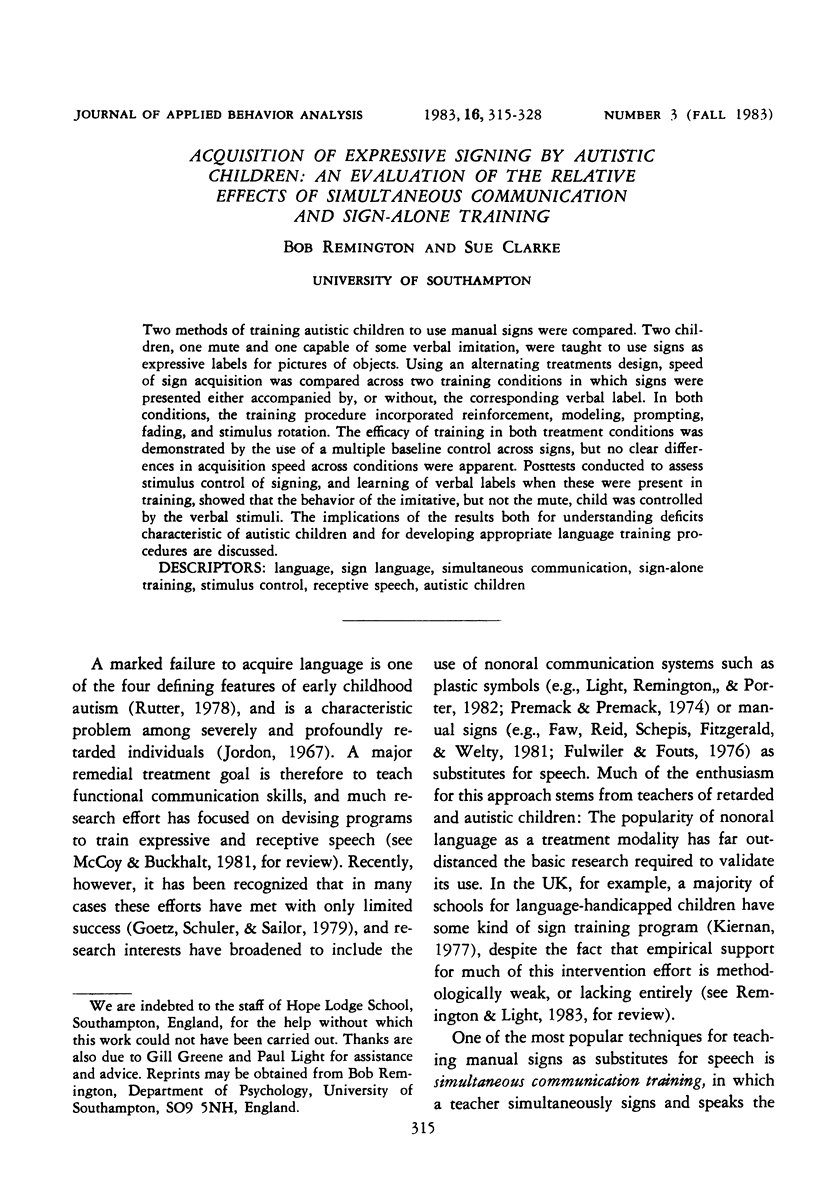
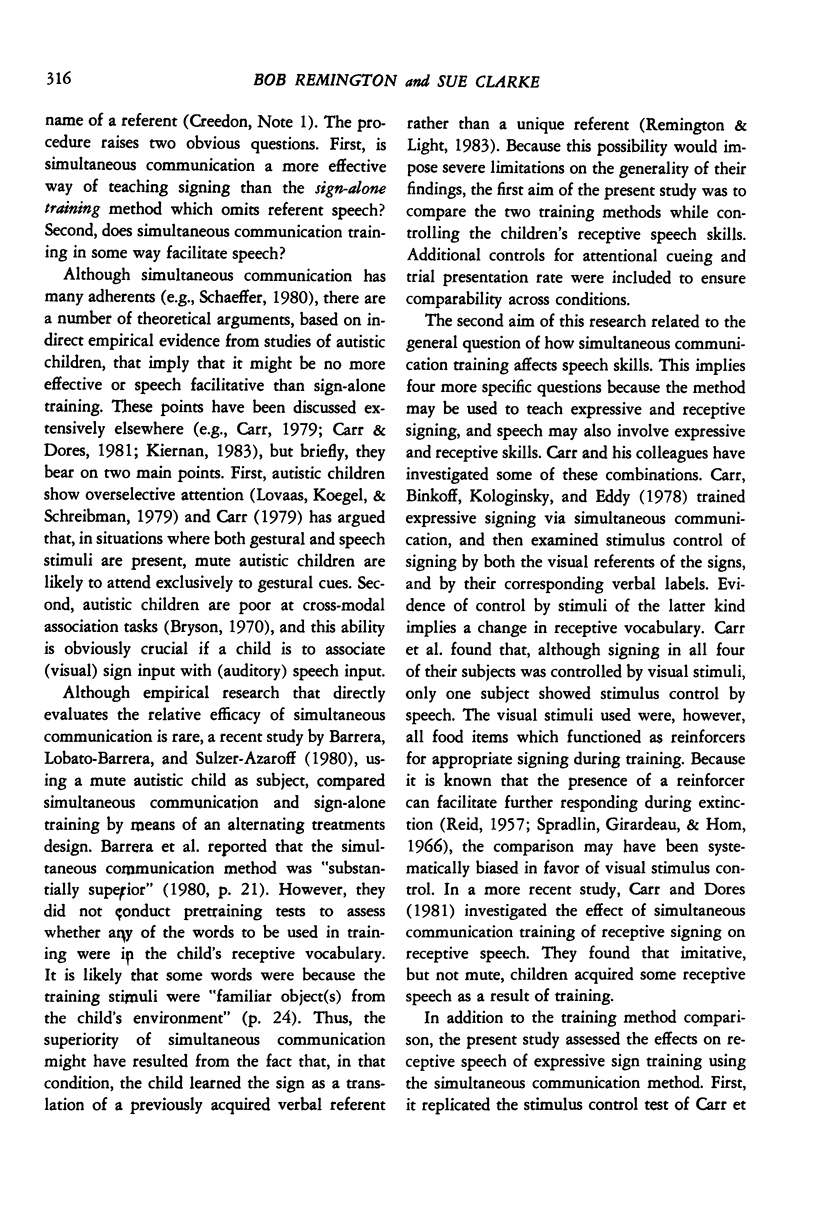
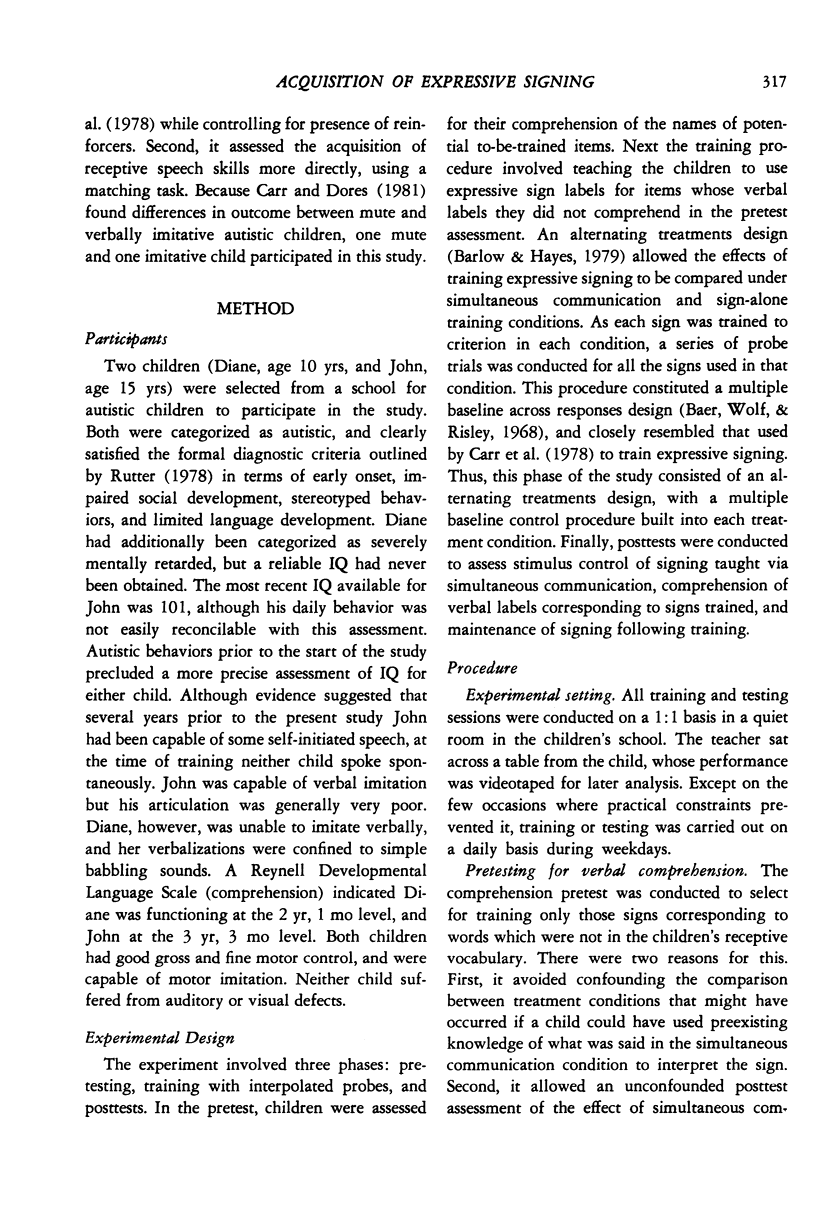
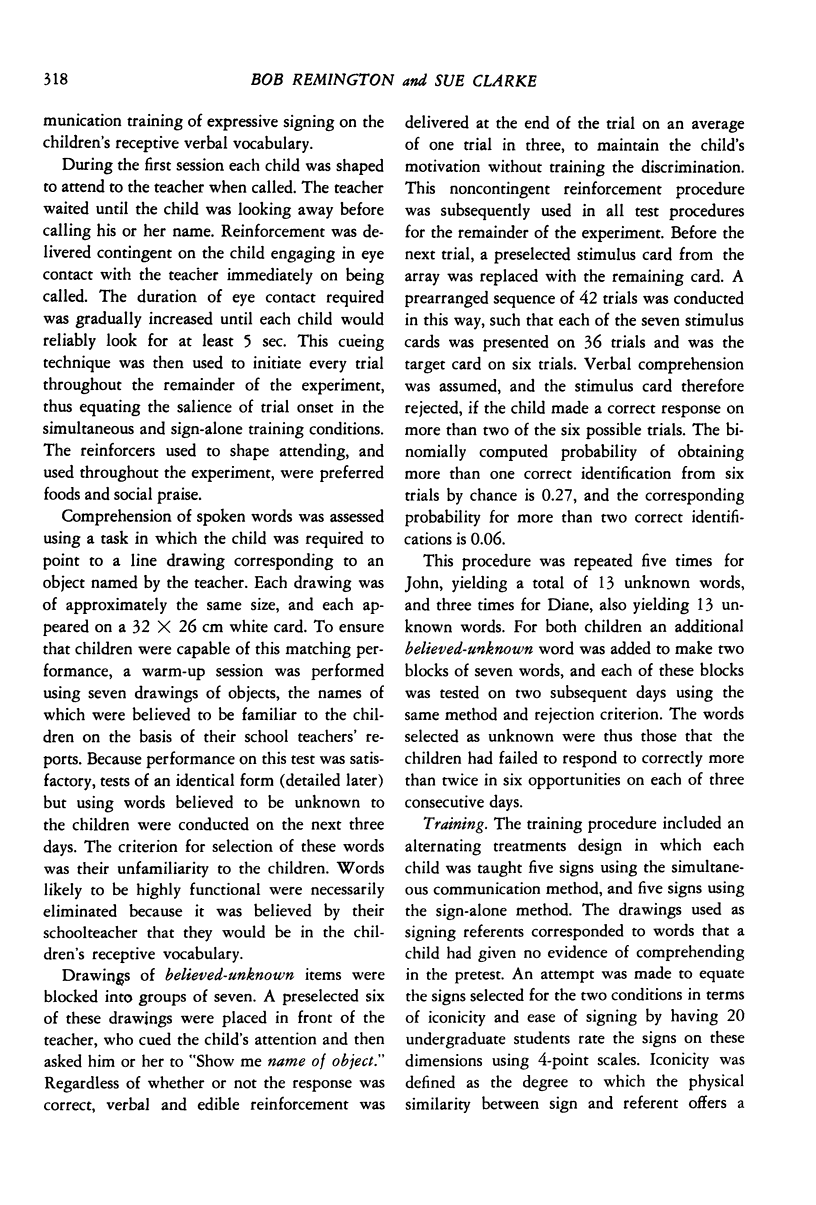

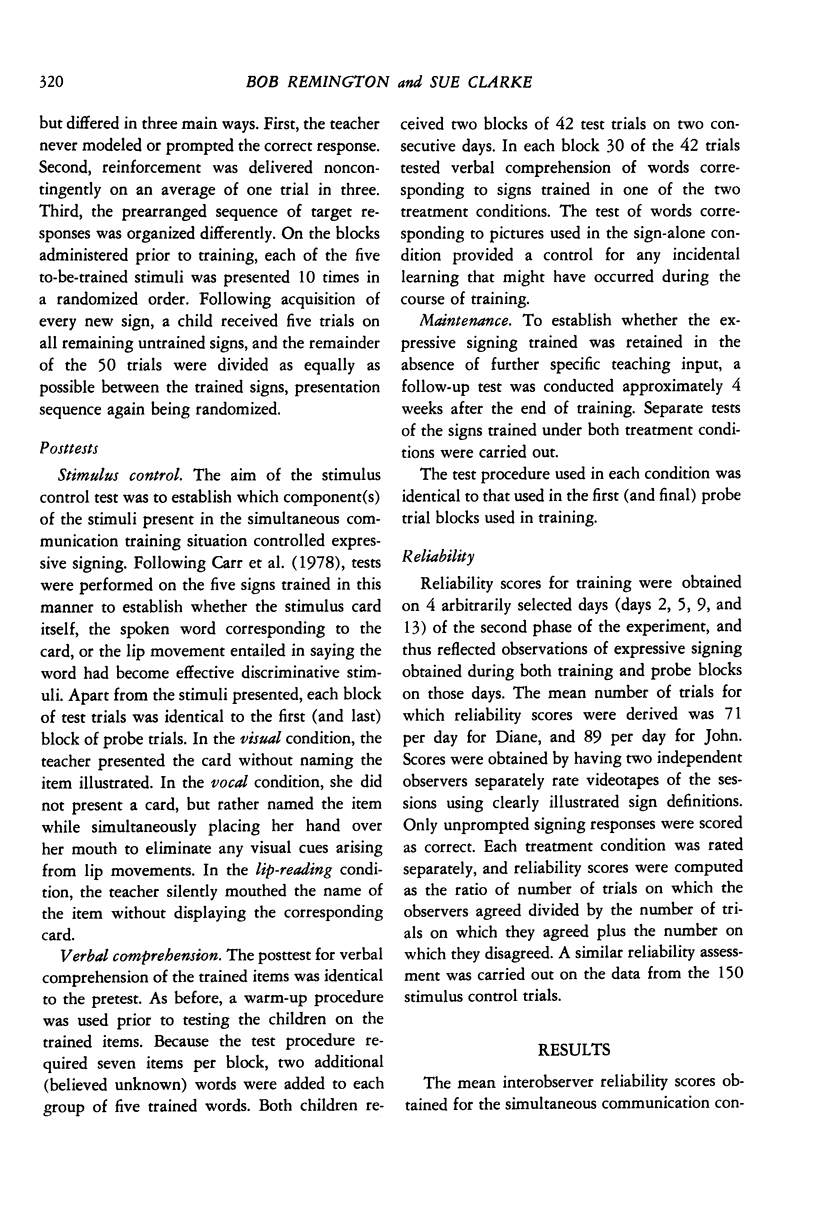
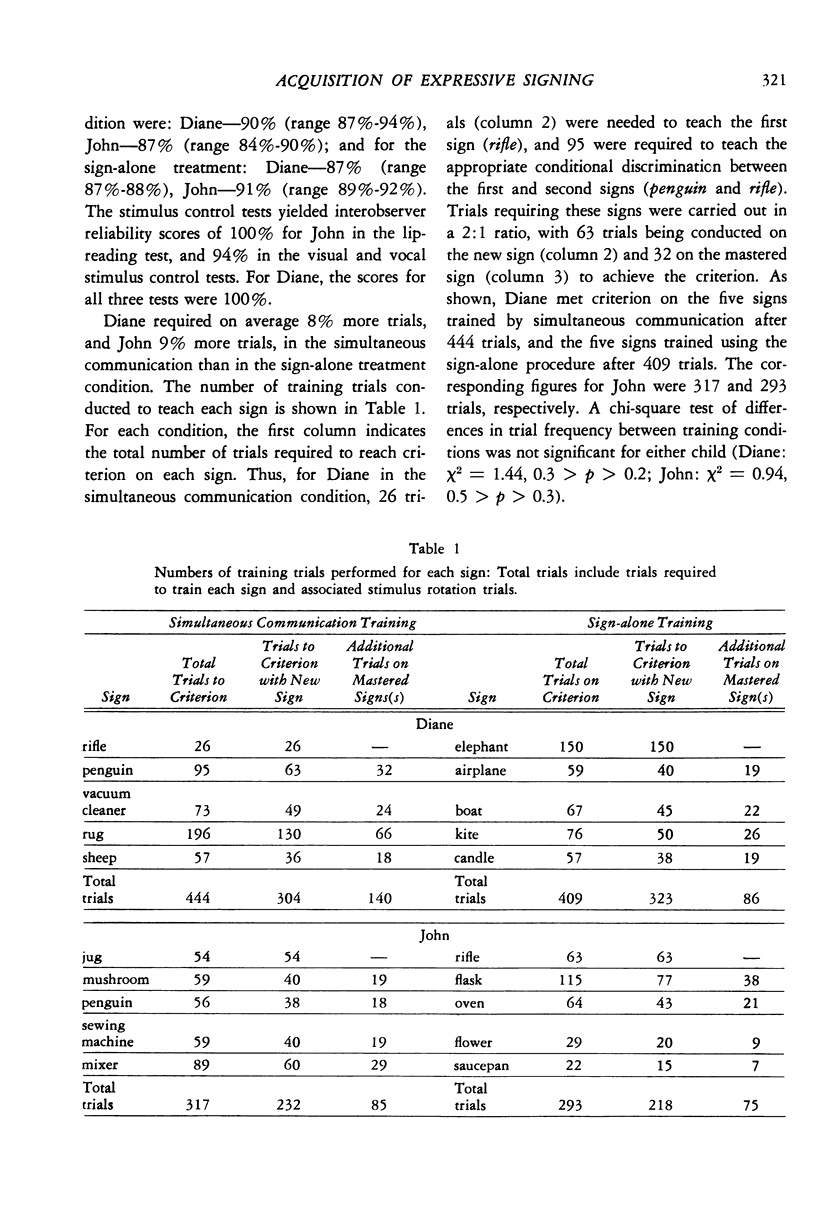
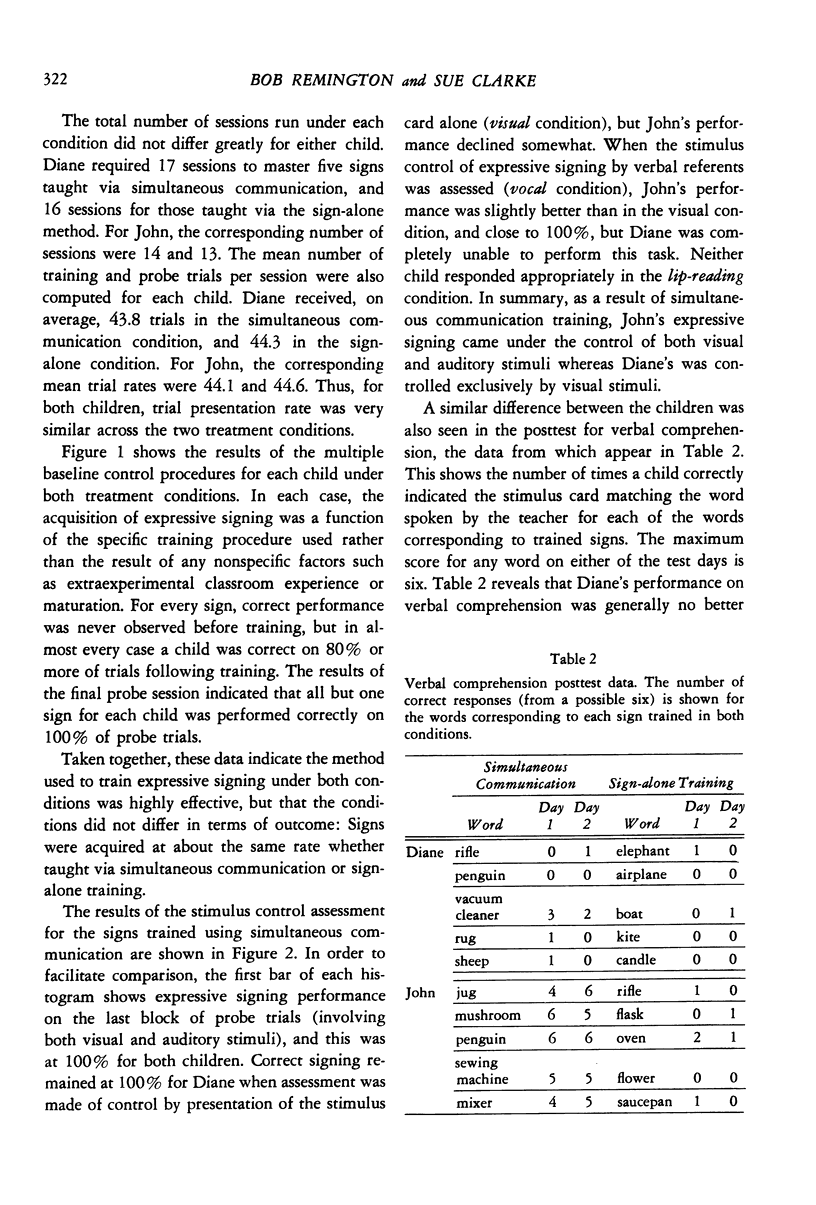
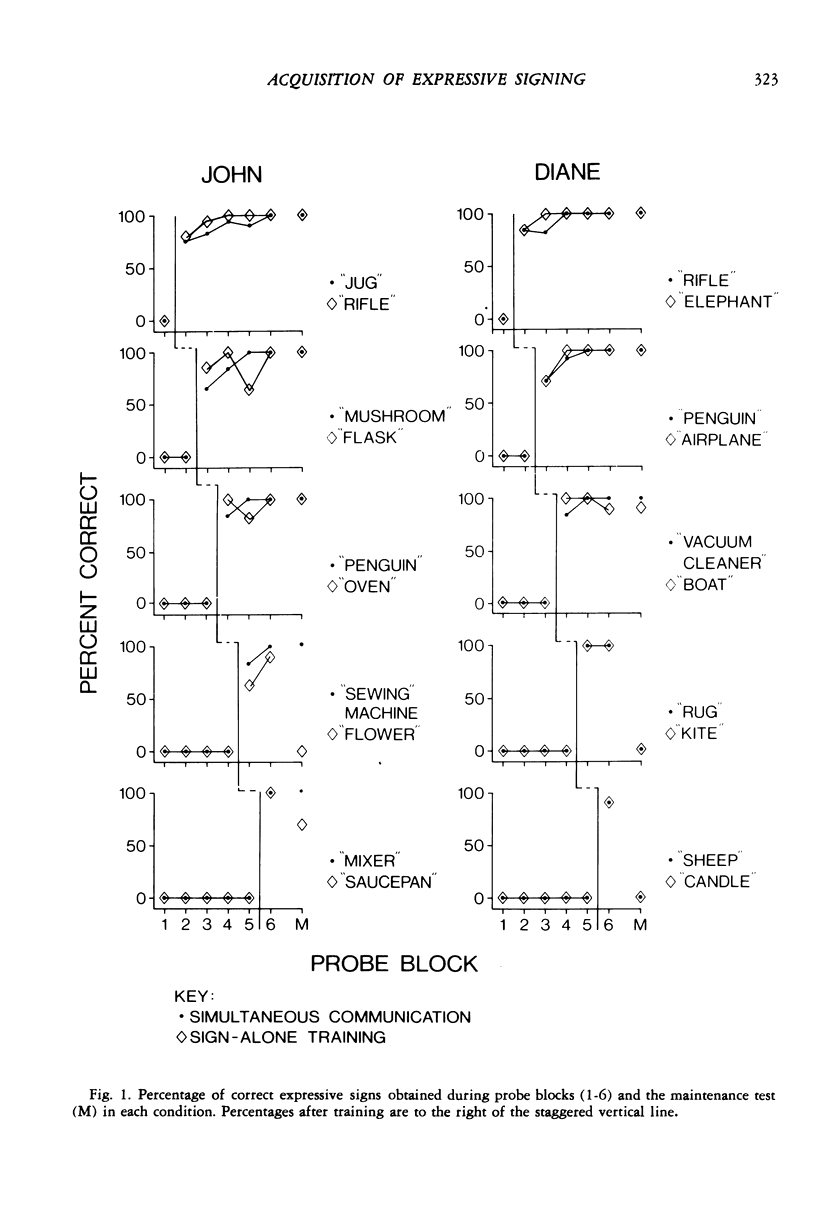
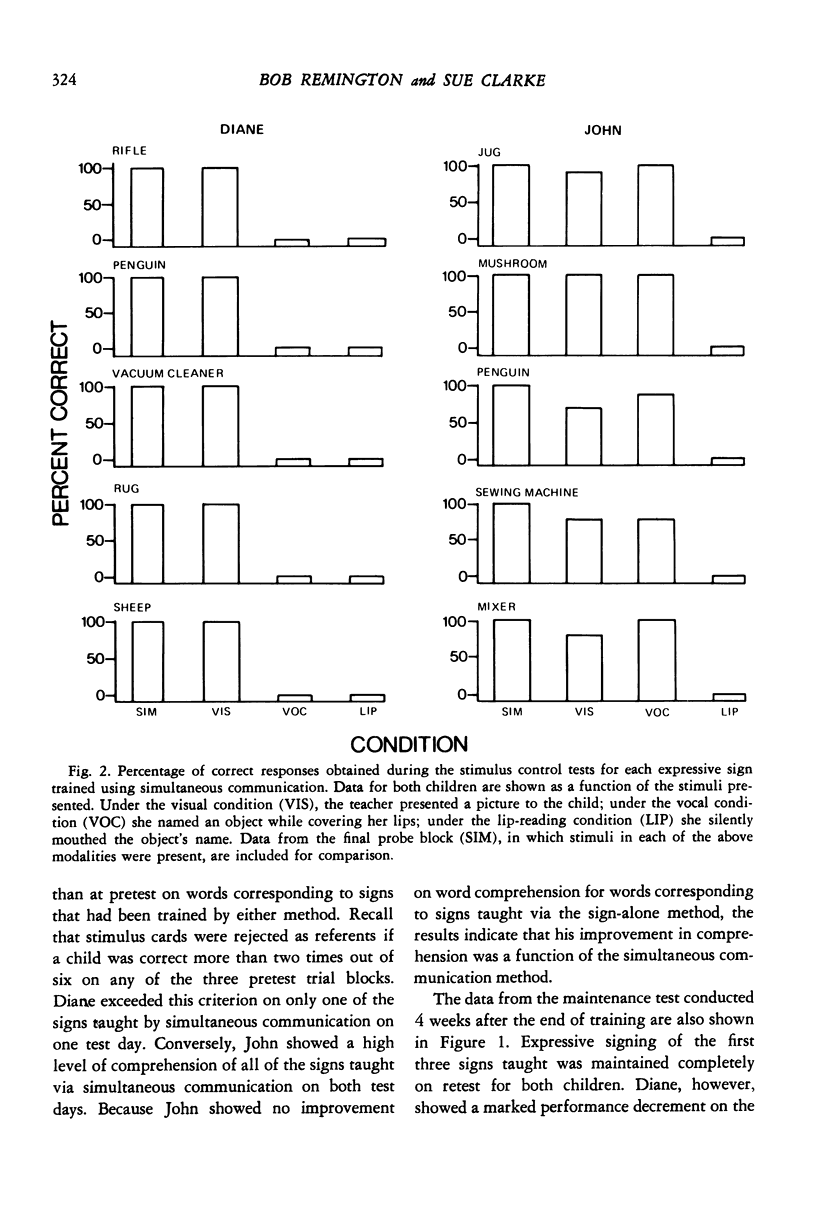
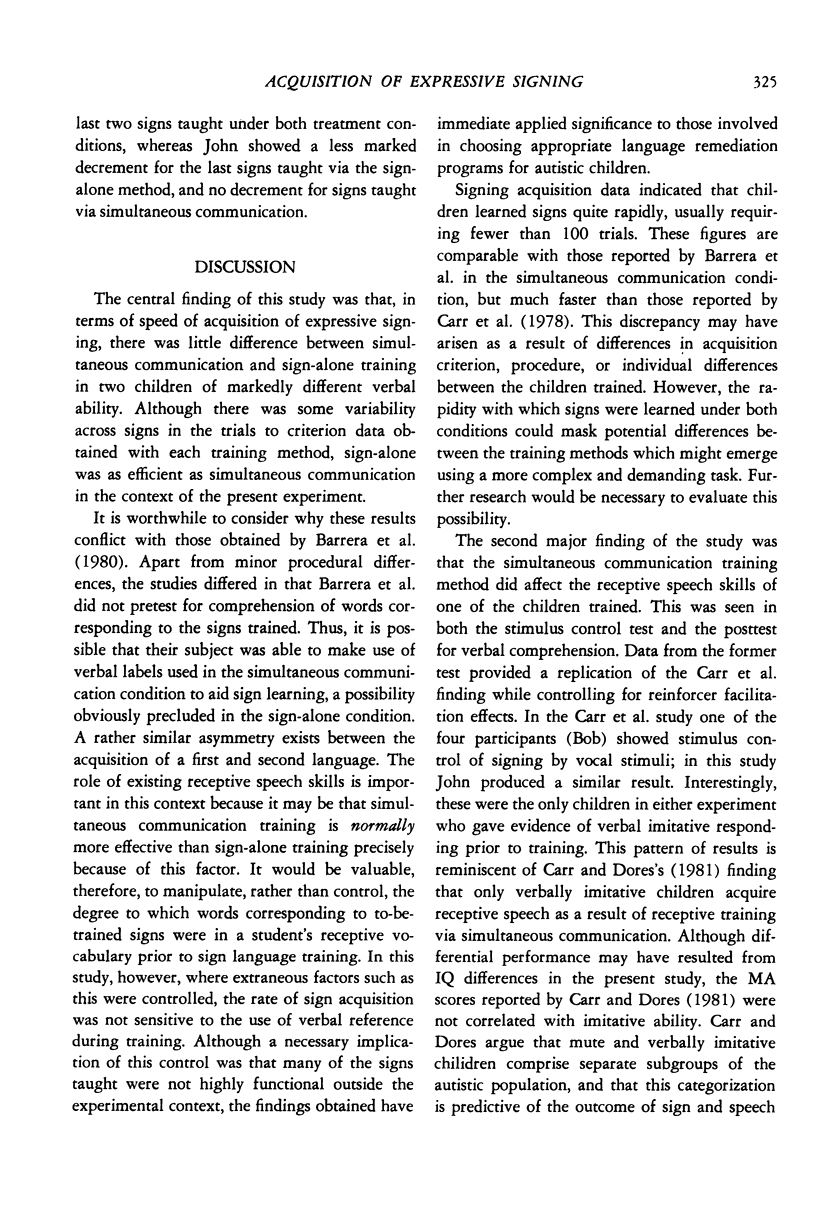
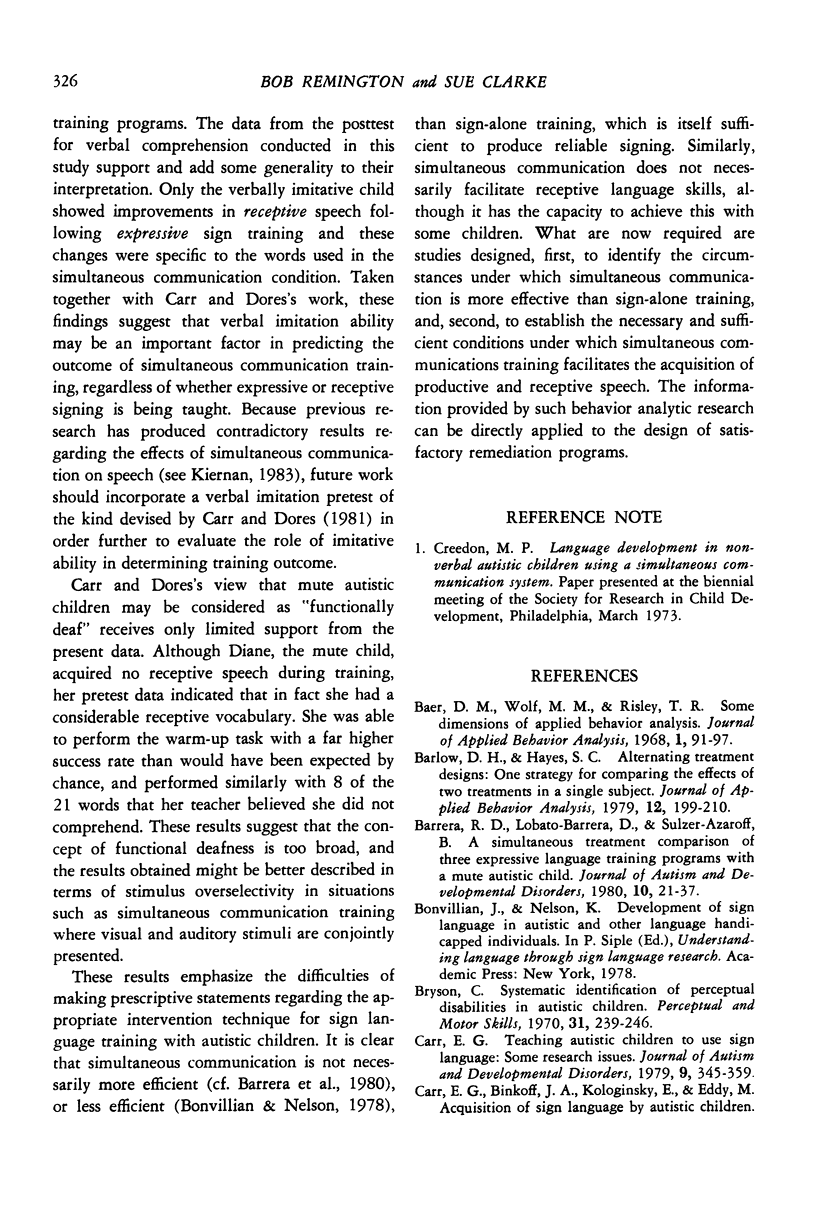
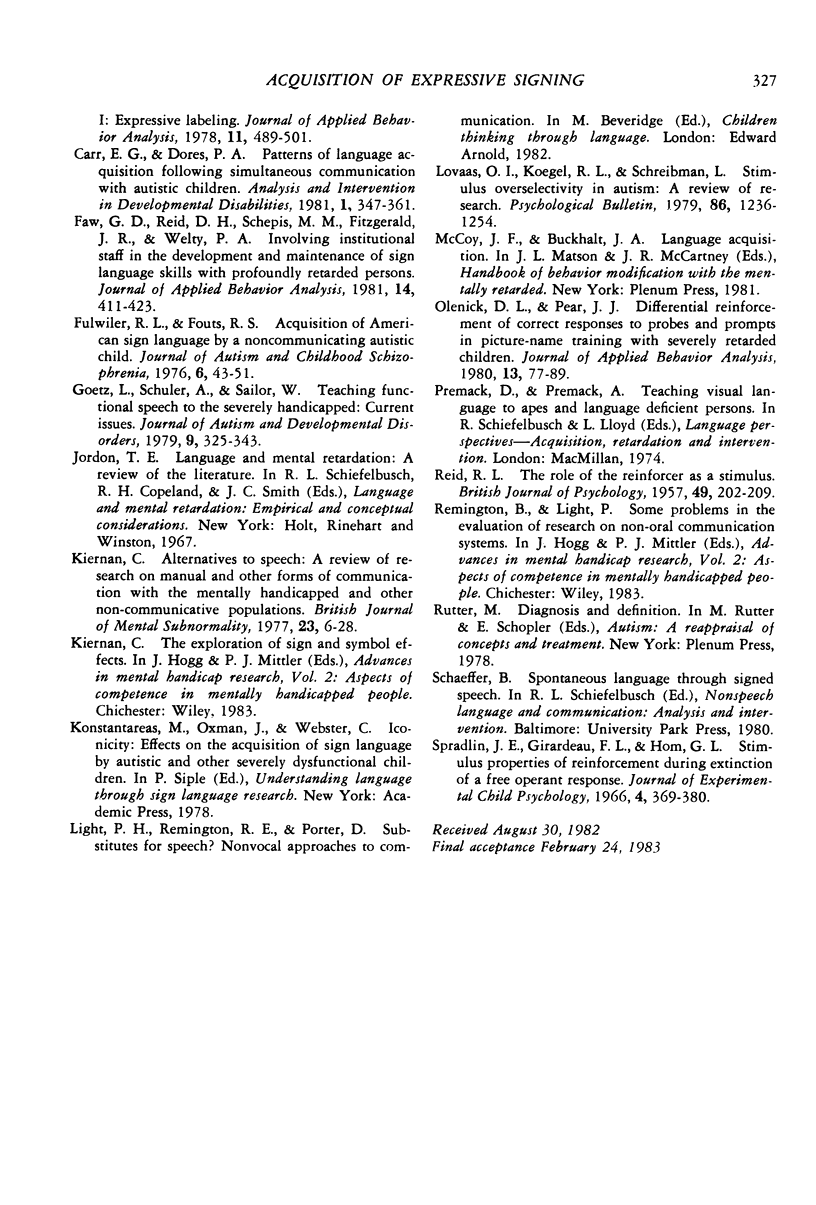
Selected References
These references are in PubMed. This may not be the complete list of references from this article.
- Baer D. M., Wolf M. M., Risley T. R. Some current dimensions of applied behavior analysis. J Appl Behav Anal. 1968 Spring;1(1):91–97. doi: 10.1901/jaba.1968.1-91. [DOI] [PMC free article] [PubMed] [Google Scholar]
- Barlow D. H., Hayes S. C. Alternating treatments design: one strategy for comparing the effects of two treatments in a single subject. J Appl Behav Anal. 1979 Summer;12(2):199–210. doi: 10.1901/jaba.1979.12-199. [DOI] [PMC free article] [PubMed] [Google Scholar]
- Barrera R. D., Lobato-Barrera D., Sulzer-Azaroff B. A simultaneous treatment comparison of three expressive language training programs with a mute autistic child. J Autism Dev Disord. 1980 Mar;10(1):21–37. doi: 10.1007/BF02408430. [DOI] [PubMed] [Google Scholar]
- Bryson C. Q. Systematic identification of perceptual disabilities in autistic children. Percept Mot Skills. 1970 Aug;31(1):239–246. doi: 10.2466/pms.1970.31.1.239. [DOI] [PubMed] [Google Scholar]
- Carr E. G., Binkoff J. A., Kologinsky E., Eddy M. Acquisition of sign language by autistic children. I: Expressive labelling. J Appl Behav Anal. 1978 Winter;11(4):489–501. doi: 10.1901/jaba.1978.11-489. [DOI] [PMC free article] [PubMed] [Google Scholar]
- Carr E. G. Teaching autistic children to use sign language: some research issues. J Autism Dev Disord. 1979 Dec;9(4):345–359. doi: 10.1007/BF01531444. [DOI] [PubMed] [Google Scholar]
- Faw G. D., Reid D. H., Schepis M. M., Fitzgerald J. R., Welty P. A. Involving institutional staff in the development and maintenance of sign language skills with profoundly retarded persons. J Appl Behav Anal. 1981 Winter;14(4):411–423. doi: 10.1901/jaba.1981.14-411. [DOI] [PMC free article] [PubMed] [Google Scholar]
- Fulwiler R. L., Fouts R. S. Acquisition of American sign language by a noncommunicating autistic child. J Autism Child Schizophr. 1976 Mar;6(1):43–51. doi: 10.1007/BF01537941. [DOI] [PubMed] [Google Scholar]
- Goetz L., Schuler A., Sailor W. Teaching functional speech to the severely handicapped: current issues. J Autism Dev Disord. 1979 Dec;9(4):325–343. doi: 10.1007/BF01531443. [DOI] [PubMed] [Google Scholar]
- Lovaas O. I., Koegel R. L., Schreibman L. Stimulus overselectivity in autism: a review of research. Psychol Bull. 1979 Nov;86(6):1236–1254. [PubMed] [Google Scholar]
- Olenick D. L., Pear J. J. Differential reinforcement of correct responses to probes and prompts in picture-name training with severely retarded children. J Appl Behav Anal. 1980 Spring;13(1):77–89. doi: 10.1901/jaba.1980.13-77. [DOI] [PMC free article] [PubMed] [Google Scholar]
- REID R. L. The role of the reinforcer as a stimulus. Br J Psychol. 1958 Aug;49(3):202–209. doi: 10.1111/j.2044-8295.1958.tb00658.x. [DOI] [PubMed] [Google Scholar]
- Spradlin J. E., Girardeau F. L., Hom G. L. Stimulus properties of reinforcement during extinction of a free operant response. J Exp Child Psychol. 1966 Dec;4(4):369–380. doi: 10.1016/0022-0965(66)90038-5. [DOI] [PubMed] [Google Scholar]


